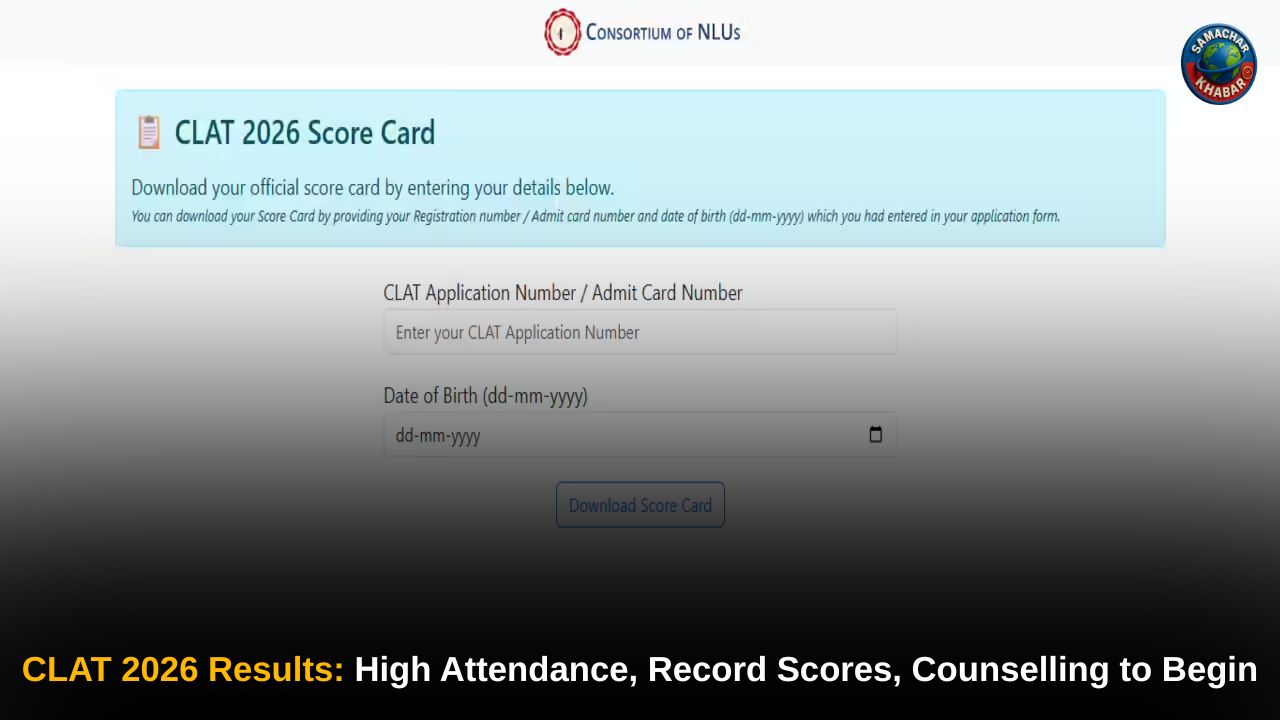India has entered a new era of labour reform as all four new labour codes officially come into force from November 21, 2025, replacing 29 scattered laws that governed wages, safety, working conditions, and social security for decades.
The updated framework aims to modernise India’s labour governance by guaranteeing minimum wages for every worker, extending social security to gig and platform workers, reducing gratuity eligibility to one year, allowing women to work across all sectors including night shifts, and strengthening workplace safety across industries.
With expanded benefits, simplified compliance and uniform standards, the reforms mark one of the most comprehensive transformations of India’s workforce protections since Independence.
Key Takeaways: Major Changes in Wages, Worker Benefits, Job Conditions and Code-Based Reforms
- Guaranteed minimum wages for all workers under the Code on Wages
- Gratuity eligibility reduced from five years to one year for fixed-term employees
- Social security extended to 400 million workers, including gig and platform workers
- Formal definitions introduced for gig work, platform work and aggregators
- Pan-India ESIC coverage, including for units with even one worker in hazardous processes
- Women allowed to work in all sectors, including night shifts, mining and heavy machinery
- Equal pay, zero gender discrimination, and mandatory safety measures
- Universal Account Number (Aadhaar-linked) for portable benefits across states
- Free annual health check-ups for workers aged above 40
- Workplace safety upgraded through national OSH standards and mandatory safety committees
- • One registration, one licence and one return to simplify compliance for employers
Centre Notifies Labour Codes, Marking the Largest Reform Since Independence
The Government of India has notified the implementation of all four labour codes—Code on Wages (2019), Industrial Relations Code (2020), Code on Social Security (2020), and the Occupational Safety, Health and Working Conditions (OSHWC) Code (2020).
After years of public debate, state consultations and union responses, the codes have now officially replaced 29 legislations dating back to the 1930s–1950s.
Prime Minister Narendra Modi described this transition as “one of the most comprehensive and progressive labour-oriented reforms since Independence,” adding that the new system empowers workers, ensures timely wages, strengthens safety, and simplifies compliance for businesses.
Labour and Employment Minister Mansukh Mandaviya called the implementation a major step toward a self-reliant and developed India by 2047, stating that the codes promote a transparent, worker-centric ecosystem while aligning India’s labour system with global standards.
Gratuity in One Year: A Major Boost for India’s Modern Workforce
One of the most impactful changes under the new codes is the reduction of the minimum service requirement for gratuity from five continuous years to one year for fixed-term employees.
A fixed-term employee—contracted for a specific duration or project—will now be entitled to gratuity after completing 12 months of service. This reform brings fixed-term workers on par with permanent employees in terms of gratuity, salary structure, leave benefits, medical facilities and social security.
Also Read: Shabana Mahmood Immigration Reforms: UK Set for Danish-Style Crackdown on Illegal Migration
For private-sector professionals in IT, retail, services, start-ups and gig platforms, where job transitions are frequent, this change ensures they no longer lose gratuity due to shorter tenures. The government expects this rule to promote direct hiring and reduce excessive dependence on contractors.
The formula for calculating gratuity remains unchanged:
Last Drawn Salary × (15/26) × Years of Service
Universal Social Security: Expanded Coverage for 400 Million Workers
The Social Security Code aims to bring India’s vast unorganised workforce into the formal welfare net. The updated system now extends PF, ESIC, insurance, disability benefits and pension provisions to gig workers, platform workers, migrant labourers, MSME workers, beedi workers, textile workers, contract staff and dock workers.

Aadhaar-linked Universal Account Numbers will make welfare benefits fully portable across states—critical for migrant workers and those employed through digital platforms.
Read in Hindi: New Labour Codes 2025 लागू: 21 नवंबर से देशभर में बदले श्रम कानून
For the first time, gig work, platform work and aggregator companies have been formally defined. Aggregators must contribute 1–2% of their annual turnover—capped at 5% of worker payouts—to a dedicated welfare fund that will support insurance and social security schemes.
Women Workers Gain Stronger Rights, Safety and Equal Opportunities
The new labour codes prohibit all forms of gender discrimination and enforce equal pay for equal work. Women are now permitted to work in all industries, including mining, hazardous processes, and heavy machinery, subject to consent and safety protocols.
Key benefits include:
• 26 weeks of paid maternity leave
• Access to crèche facilities
• Medical bonus of Rs 3,500
• Work-from-home flexibility where suitable
• Mandatory inclusion of parents-in-law as dependents
• Representation in all workplace grievance committees
These measures expand women’s access to higher-paying roles and promote gender-balanced participation across sectors.
Stronger Safety and Working Conditions Across Industries
Under the OSHWC Code, workplace safety standards have been modernised nationwide. A National Occupational Safety and Health Board will harmonise safety norms across sectors, especially hazardous ones.
Key provisions include:
• Free annual health check-ups for workers aged above 40
• Safety committees mandatory in establishments with over 500 workers
• Standard working hours capped at 8–12 hours per day and 48 hours per week
• Chemical-handling training and protective equipment for plantation workers
• Uniform accident policies for mine workers
• Safety and welfare facilities for dock and export-sector workers
In a significant relief for lakhs of delivery and mobility workers, accidents during commuting between home and the workplace will now be treated as employment-related for compensation purposes.
Sector-Wise Impact: Who Benefits from the New Labour Codes
Fixed-Term Employees
• Gratuity after one year
• Equal benefits as permanent staff
• Encourages transparent, direct hiring
Gig & Platform Workers
• First-ever formal recognition
• Aggregator-funded welfare
• UAN ensures portable benefits
Contract Workers
• Gratuity after one year
• Health and security guaranteed through principal employer
MSME Workers
• Social security coverage
• Minimum wages and timely payments
• Double overtime and improved facilities
Plantation Workers
• Covered under OSHWC and Social Security Codes
• Mandatory safety training
• Full ESI benefits for families
IT & ITES Workforce
• Salary release by the 7th of every month
• Equal pay and non-discrimination
• Night-shift opportunities for women
Beedi, Textile, Audio-Visual, Mine and Export Workers
• Minimum wages and bonus eligibility
• Double overtime
• Broader safety provisions
• Legal recognition and timely wages
Spiritual Perspective: Saint Rampal Ji Maharaj’s Guidance on Fairness and Worker Welfare
In the context of India’s evolving labour protections, many followers highlight how Saint Rampal Ji Maharaj consistently emphasises fairness, equality and non-exploitation as essential principles for a just society. His spiritual teachings, based on authentic scriptures, focus on creating conditions where every individual—regardless of occupation—receives dignity, security and humane treatment.
According to devotees, the message of ensuring rightful wages, protecting vulnerable workers, and removing unjust practices aligns with the broader spiritual duty of compassion and justice. The unique knowledge of Saint Rampal Ji Maharaj encourages a value-based approach to governance and societal reform, supporting systems that prioritise human welfare and moral responsibility.
A Defining Shift in India’s Labour Future
The implementation of India’s four new labour codes marks the most comprehensive restructuring of worker protections in decades. With guaranteed minimum wages, one-year gratuity eligibility, expanded social security, formal recognition of gig and platform work, strengthened rights for women, and nationwide safety standards, the reforms create a unified, transparent and equitable labour system.
Covering over 400 million workers across diverse sectors, the new codes aim to balance workforce welfare with economic efficiency, reduce outdated complexities and bring India’s labour environment closer to global standards. For millions of workers, this marks the beginning of a more secure and inclusive future.
FAQs on India’s New Labour Codes and Their Nationwide Impact
1. What are the key changes introduced under India’s new labour codes?
The new labour codes guarantee minimum wages, one-year gratuity for fixed-term employees, expanded social security, women’s safety rights, and modernised workplace conditions across all sectors.
2. Who will benefit from the reduced one-year gratuity eligibility?
Fixed-term employees, contract workers, IT staff, gig workers, and employees in high-attrition sectors benefit most from the one-year gratuity rule.
3. How do the new labour codes support gig and platform workers?
Gig and platform work are formally defined. Aggregators must contribute 1–2% of turnover to a welfare fund, ensuring social security coverage.
4. What new rights have been granted to women under the labour codes?
Women can work night shifts, mining, heavy machinery and hazardous sectors, with equal pay, safety measures, maternity leave, crèche access and grievance-committee representation.
5. How do the new labour codes improve workplace safety and conditions?
The codes introduce national OSH standards, safety committees, mandatory health check-ups, regulated working hours and expanded protections for hazardous, mining, plantation and MSME workers.

















